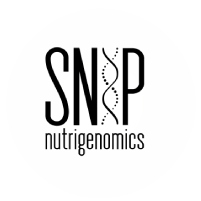What is DNA?
DNA, or deoxyribonucleic acid, is the primary component of chromosomes and a long molecule that stores all the information needed to build an organism.
Each cell contains thousands of copies of DNA – organized in structures called chromosomes – which store the information needed to build and maintain the organism (you).
Where is DNA found?
DNA is found inside the cell’s nucleus.
The cell is very small, and each DNA molecule must be tightly packaged. This packaged form of the DNA is called a chromosome.
During DNA replication, DNA unwinds so it can be copied.
At other times in the cell cycle, DNA also unwinds so that its instructions can be used to make proteins and other biological processes.
But DNA is in its compact chromosome form during cell division to enable transfer to new cells.
How much DNA do we have?
For humans, the complete DNA guidebook, or genome, has around 3 billion bases and about 20,000 genes on 23 pairs of chromosomes.
What is DNA Made from?
DNA is made up of units called base pairs. There are four different bases– adenine (A), guanine (G), cytosine (C), and thymine (T).
These bases pair up with each other (A with T and C with G) to form the base pairs.
Each base is also attached to a sugar molecule and a phosphate molecule.
Together, a base, sugar, and phosphate are called a nucleotide.
Nucleotides are arranged in two long strands forming a double helix spiral.
The structure of the double helix is somewhat like a ladder, with the base pairs forming the ladder’s rungs and the sugar and phosphate molecules forming the vertical sidepieces of the ladder.
What does DNA do?
Bases are organized into long sequences called genes, which contain all the information necessary for cells to produce proteins.
These proteins perform the functions required for life, such as building and maintaining cells, regulating bodily processes, and transmitting genetic information from one generation to the next.
The order of bases determines what instructions are in a strand of DNA.
For example, the sequence ATCGTT might mean blue eyes, while ATCGCT might mean brown.
How are DNA sequences used to make proteins?
DNA contains the instructions for making proteins.
These instructions are read by enzymes, which transcribe them into mRNA.
The information in the mRNA is then translated into the language of amino acids.
This language tells the cell’s protein-making machinery the precise order to link the amino acids to produce a specific protein.
One important thing about DNA is that it can make copies of itself.
This is called replication.
Each strand of DNA can act as a template for making new DNA.
This is important for cell division because each new cell must have the same DNA as the old one.
Who discovered DNA?
The Swiss biochemist Frederich Miescher first observed DNA in the late 1800s.
But it wasn’t until researchers figured out the structure of the DNA molecule that they realized how important it is to biology.
For many years, scientists debated which molecule carried life’s biological instructions.
Most thought DNA was too simple a molecule to play such a critical role.
Instead, they argued that proteins were more likely to carry out this vital function because they’re more complex and come in different forms.
In 1953, James Watson, Francis Crick, Maurice Wilkins, and Rosalind Franklin figured out DNA is a double helix.
This means that it can carry information from one generation to the next.
While much is still unknown about how DNA works and how it stores and passes on information, we do know that this remarkable molecule is at the heart of all living things.
Thanks to technological advances and our understanding of genetics, we can now manipulate and even reprogram DNA, giving us the power to change the course of human history.
So the next time you look at a strand of DNA, remember what an incredible molecule it is and the many ways it continues to shape our world.


